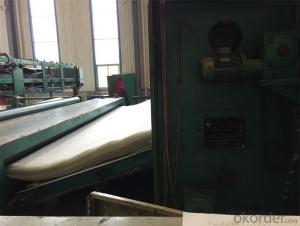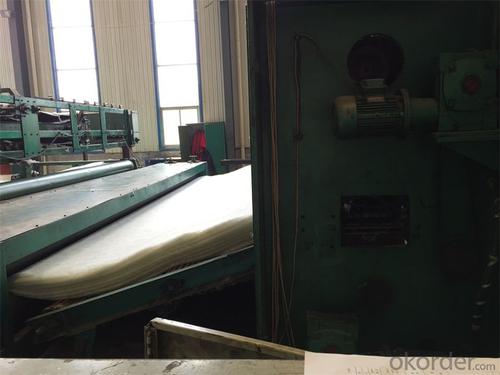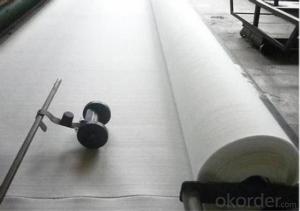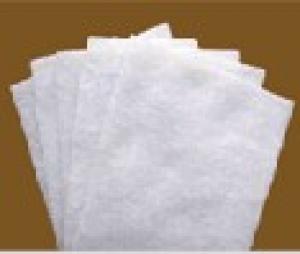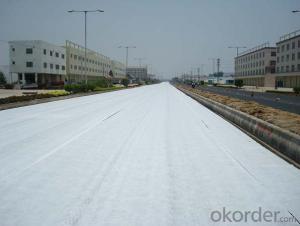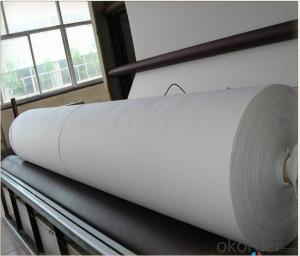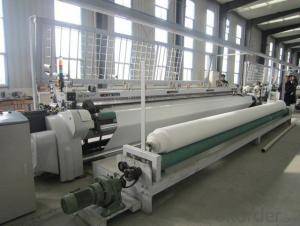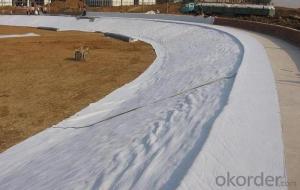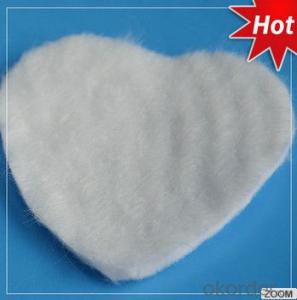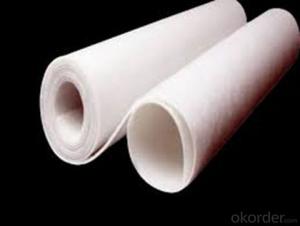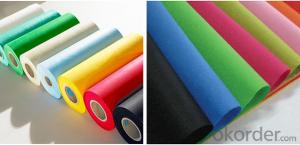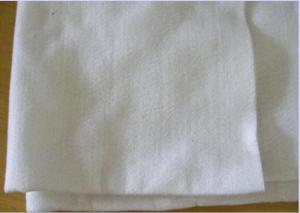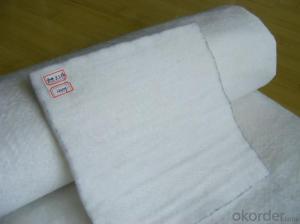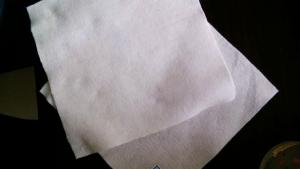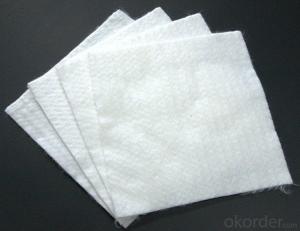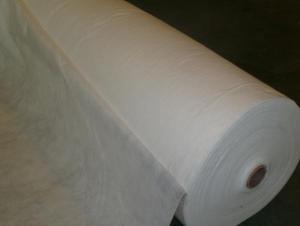Non Woven Geotextile PP Long Fibers Filament Spunbond Needle Punch Geotextile
- Loading Port:
- Qingdao
- Payment Terms:
- TT or L/C
- Min Order Qty:
- 10000 m²
- Supply Capability:
- 100000 m²/month
OKorder Service Pledge
OKorder Financial Service
You Might Also Like
1. nonwoven geotextiles are produced from high quality raw-materials. The Geotextiles
are needle punched to form a strong fabric.This strong fabric retains its dimensional stability and is resistant
to damage from construction stresses.
2. nonwoven Geotextiles are available in varying strengths and thicknesses according to your
project. Custom roll sizes are also available.
3. provides the latest engineered, technically superior products that bring technical certainty and
measurability.
4. geotextiles are highly durable and are characterised by:
· High puncture resistance
· Large elongation before break
· Excellent filter characteristics at all strains
· Specially chosen fibres for high UV protectio
No. | Testing Item | Unit Weight (g/m2) | ||||||||||
100 | 150 | 200 | 250 | 300 | 350 | 400 | 450 | 500 | 600 | 800 | ||
1 | Thickness(mm≥) | 0.9 | 1.3 | 1.7 | 2.1 | 2.4 | 2.7 | 3 | 3.3 | 3.6 | 4.1 | 5 |
2 | (MD)Breaking Strength(KN/m≥) | 2.5 | 4.5 | 6.5 | 8 | 9.5 | 11 | 12.5 | 14 | 16 | 19 | 25 |
3 | (TD)Breaking Strength(KN/m≥) | 2.5 | 4.5 | 6.5 | 8 | 9.5 | 11 | 12.5 | 14 | 16 | 19 | 25 |
4 | (MD)Breaking Elongation(%) | 25-100 | ||||||||||
5 | (TD)Breaking Elongation(%) | |||||||||||
6 | Static (CBR) Puncture(KN≥) | 0.3 | 0.6 | 0.9 | 1.2 | 1.5 | 1.8 | 2.1 | 2.4 | 2.7 | 3.2 | 4 |
8 | Equivalent caliber(mm) | 0.07-0.2 | ||||||||||
7 | Cofficient of Permeability(cm/s) | k×10-1-10-3 (K=1.0-9.9) | ||||||||||
9 | (MD)Tear Strength(KN≥) | 0.08 | 0.12 | 0.16 | 0.2 | 0.24 | 0.28 | 0.33 | 0.38 | 0.42 | 0.46 | 0.6 |
10 | (TD)Tear Strength(KN≥) | 0.08 | 0.12 | 0.16 | 0.2 | 0.24 | 0.28 | 0.33 | 0.38 | 0.42 | 0.46 | 0.6 |
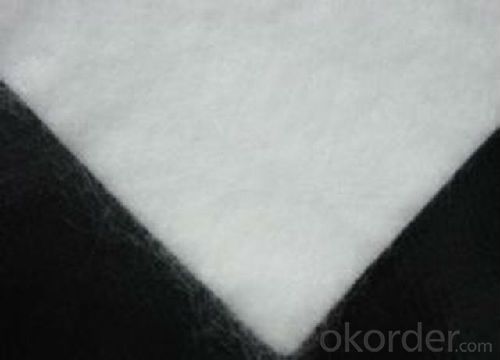
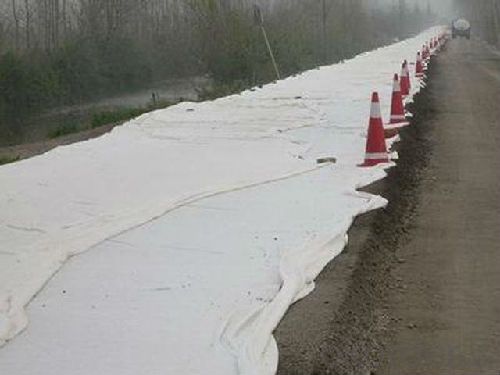
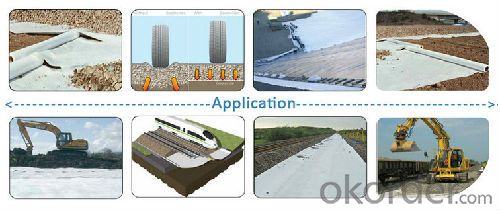

FAQ:
- Q: What can we do for the special customer?
A: Provide custom made service with customer's drawing; We make sure to provide you with the best solutions for your individual case. Whether standard items or non-standard items.
- Q: What can we supply?
A: We provide high levels of communication from start to finish.
- Q: What is our advantage?
A: Top Cemented Carbide has extensive business experience, Fast delivery and high quality.
As its name suggests Geotextiles refers to textiles related to earth or soil. When any permeable material used with rock, soil or earth it is termed as Geotextiles. The basic function of this technology is to prevent soil erosion to strengthening heavy concrete structures. This technology has not yet gained much attention in India, but is widely used in many countries for construction of bridges, roads, railway tracks to improve its strength. Many researchers have view that this technology is not newly developed but is in use from past thousands of years.
Formation of Geotextiles
Geotextiles can be formed of synthetic fibers, natural fibers or combination of the two. In past Geotextiles were made of natural plant fibers while today are usually formed of synthetic polymers such as polyester, polypropylene (PP), polyamides (PA) and polyamides (PA). Geotextiles made from natural fibers are less durable as they get decomposed with passage of time.
Choice of formation depends on the required properties and service life for which it is used. For example, natural fiber base Geotextiles is used for erosion control mats where durability is not a critical factor.
Natural Fiber Based Geotextiles
Natural fibers like Jute and coir have special applications. These different fibers degrade at different rates. Coir geotextiles degrade in 2 to 3 years while jute degrades in 1 to 2 years. Because of this property coir is used in situations where vegetation takes longer to establish, and jute is used in low rainfall areas as it can absorb more moisture. Also used for rural unpaved roads.
Advantages
1. Natural fiber-based geotextiles are environmental friendly.
2. Its biodegradable nature has certain cost-effective applications in erosion control and re-vegetation.
3. It is helpful in quick establishment of vegetation.
4. It also helps in dust control, sand dune formation, wind erosion control and stabilization.
- Q: How do geotextiles help with waste containment systems?
- Geotextiles help with waste containment systems by providing a protective barrier that prevents the escape of waste materials. They effectively control the filtration of liquids and gases, reducing the risk of contamination and environmental damage. Additionally, geotextiles help to reinforce the stability and integrity of waste containment structures, ensuring long-term durability and reducing the potential for leaks or failures.
- Q: Highway on the highway geotextile laying program who has ah?
- According to your actual project, the Hongxiang Expressway geotextile can provide the overall solution. Hongxiang new material solution
- Q: How many grams of geotextiles on the top of the garage
- Drainage board is generally 1000 grams 20MM, geotextiles generally require 250 grams, you need to contact Huazhi geotechnical materials manufacturers to answer your questions
- Q: Is the polypropylene composite geotextile and the polyethylene composite geomembrane the same?
- Geotextiles and geomembranes are not the same, but they complement each other to meet the engineering requirements. First introduced under the geotextile: geotextile is the state for civil engineering in the construction of a new type of construction materials, by filament or short fiber through different equipment and process shop into a mesh, and then after acupuncture and other processes to different Fibers are intertwined with each other, tangent to the fabric to make the fabric normal, so that the fabric is soft, plump, thick, stiff, to meet the different thickness to meet the requirements, according to the length of silk is divided into filament non-woven geotextile or short wire Non-woven geotextile, filament tensile strength higher than the short wire. Fibrous soft with a certain tear resistance. The main role is: filter, filter, reinforcement role. Specifications from 100 grams per square meter to 800 grams per square meter. The main material for the polyester fiber, with excellent permeability, filtration, durability deformation adaptability, and has a good flat drainage capacity (see below) Geomembrane to plastic film as anti-seepage substrate, and non-woven composite Made of geotextile impermeable material can be divided into two cloth a film, a cloth a film, its impermeability depends mainly on the plastic film impermeability. The geomembrane is a waterproof barrier material with the polymer of the polymer chemical material as the basic raw material. The proportion of small, strong extension, high adaptability to adapt to deformation, corrosion resistance, low temperature, good frost resistance. (See below)
- Q: How are geotextiles used in landfills?
- Geotextiles are used in landfills as a protective barrier or liner, preventing the contamination of soil and groundwater by acting as a barrier between the waste and the underlying natural environment. They help to control the flow of liquids, filter out pollutants, and provide stability to the landfill structure, ultimately enhancing environmental protection and the longevity of the landfill.
- Q: Construction of composite geotextile
- Geotextile as a protective layer of geomembrane, so that the protection of impermeable layer from damage. In order to reduce the UV radiation, increase the anti-aging properties, it is best to use the laying method. Construction, the first use of smaller diameter sand or clay to find the base surface, and then laying geomembrane. Geomembrane should not be stretched too tight, buried at both ends of the soil part of the corrugated, and finally in the shop on the geomembrane with a fine sand or clay shop layer of 10cm or so excessive layer. Puzzle 20-30cm stone (or concrete prefabricated block) for the anti-Chong protective layer. Construction, should try to avoid the stones directly hit the geomembrane, the best side of the film side of the protective layer of the construction. Composite geomembrane and the surrounding structure should be connected with expansion bolts and steel plate pressure bar anchorage, the connection site to brush the emulsion asphalt (2mm thick) bonding, to prevent the occurrence of leakage.
- Q: What are the different methods of installing geotextiles?
- There are several different methods of installing geotextiles, including direct placement, trenching, and stapling. Direct placement involves unrolling the geotextile fabric directly onto the ground surface and securing it with stakes or pins. Trenching involves digging a narrow trench along the desired location and placing the geotextile fabric inside the trench before backfilling it. Stapling involves using staples or nails to secure the geotextile fabric to the ground or other surfaces. The specific method used depends on the project requirements and the intended function of the geotextiles.
- Q: Which big god has the relevant documents? bow down!
- Mainly from the anti-seepage, to prevent the role of soil erosion, I am specializing in the production of geotextiles, wish smooth
- Q: How do geotextiles help with moisture management in construction projects?
- Geotextiles aid in moisture management in construction projects by acting as a barrier against water infiltration and promoting drainage. They are permeable fabrics that allow water to flow through, preventing water buildup and potential damage to structures. Geotextiles also help to stabilize soil, control erosion, and separate different soil layers, further enhancing moisture management in construction projects.
- Q: Can geotextiles be used in geotextile wrapped columns?
- Yes, geotextiles can be used in geotextile wrapped columns. Geotextiles are commonly used as a wrapping material for columns in geotechnical engineering applications. They provide reinforcement and confinement to the columns, enhancing their load-bearing capacity and stability. Additionally, geotextiles help prevent soil erosion and facilitate proper drainage, further improving the performance of geotextile wrapped columns.
1. Manufacturer Overview
| Location | Taian City,Shandong Province,China |
| Year Established | 2003 |
| Annual Output Value | Above US$100 Million |
| Main Markets | Africa, North America, Eastern Europe, South Asia, Western Europe |
| Company Certifications | ISO9001;IS014001 Certificate |
2. Manufacturer Certificates
| a) Certification Name | |
| Range | |
| Reference | |
| Validity Period |
3. Manufacturer Capability
| a) Trade Capacity | |
| Nearest Port | Qingdao Port;Tianjing Port;Shanghai Port |
| Export Percentage | |
| No.of Employees in Trade Department | 21-30 People |
| Language Spoken: | English; Chinese; |
| b) Factory Information | |
| Factory Size: | 10,000-30,000 square meters |
| No. of Production Lines | Above 10 |
| Contract Manufacturing | Geotechnical Material (Geogrid,Fiberglass/Polyester Geogrid;Geocell;Geonet and Geomat;Plastic Safety Fence);Plastics products;Rubber products;Geotextile;Carpet;Compound geomembrane |
| Product Price Range | Average |
Send your message to us
Non Woven Geotextile PP Long Fibers Filament Spunbond Needle Punch Geotextile
- Loading Port:
- Qingdao
- Payment Terms:
- TT or L/C
- Min Order Qty:
- 10000 m²
- Supply Capability:
- 100000 m²/month
OKorder Service Pledge
OKorder Financial Service
Similar products
Hot products
Hot Searches
Related keywords
